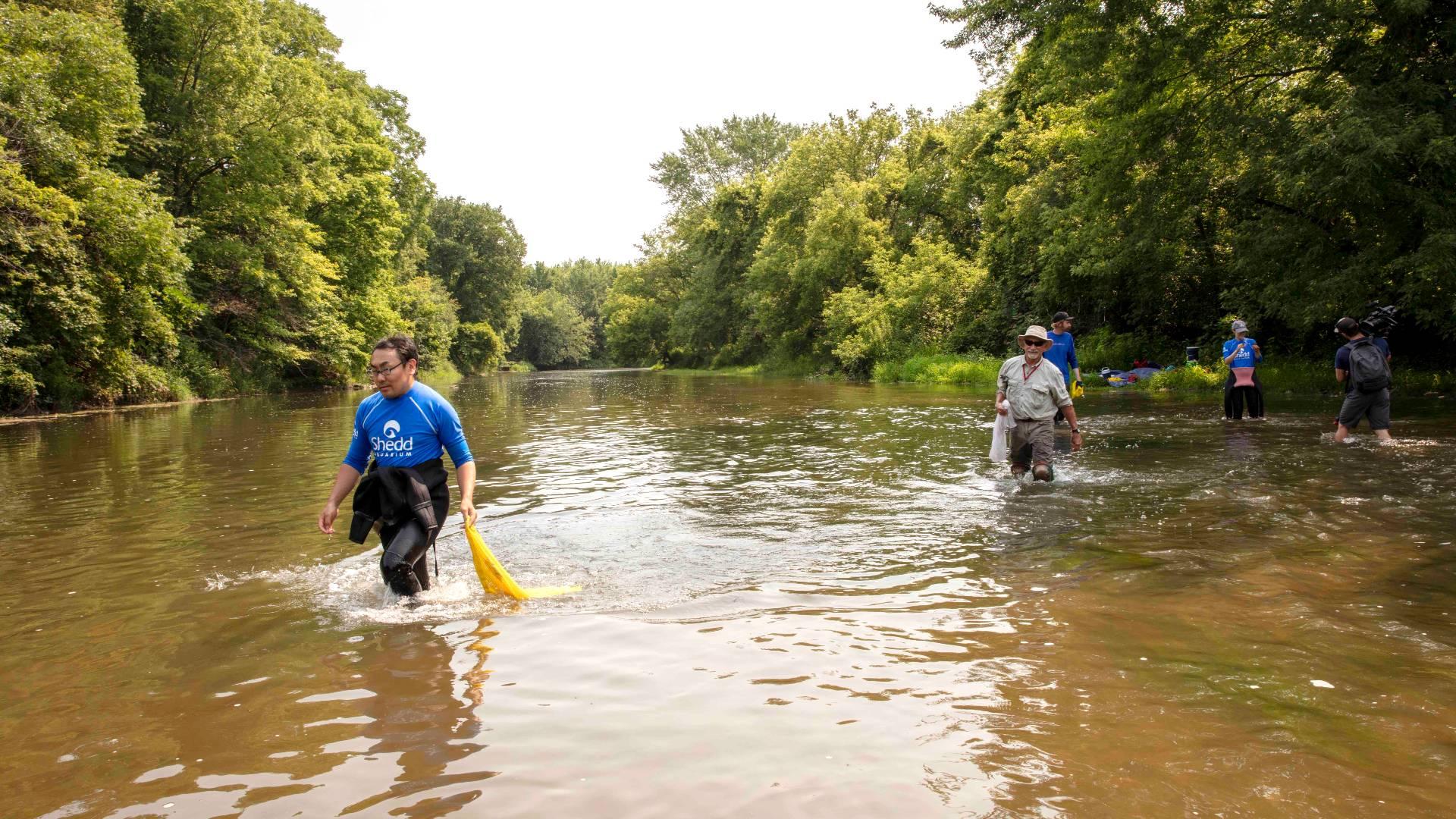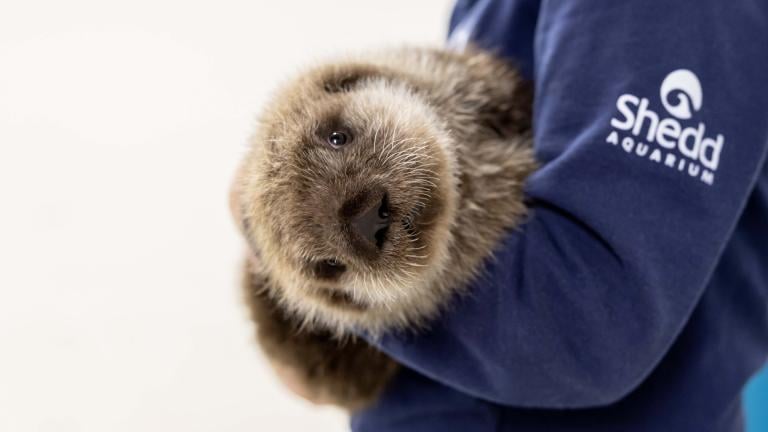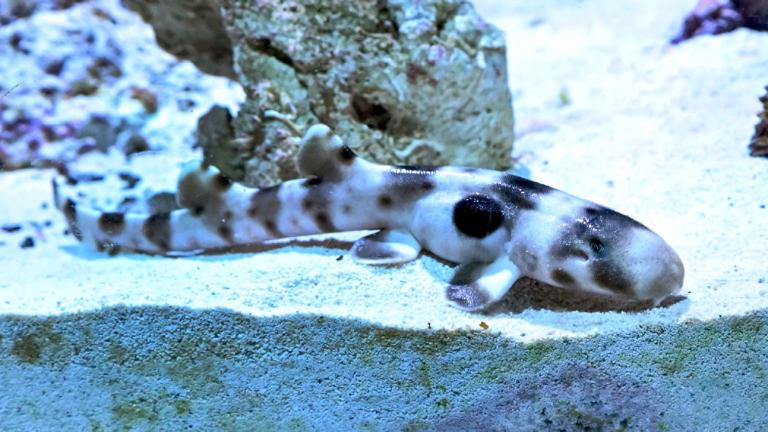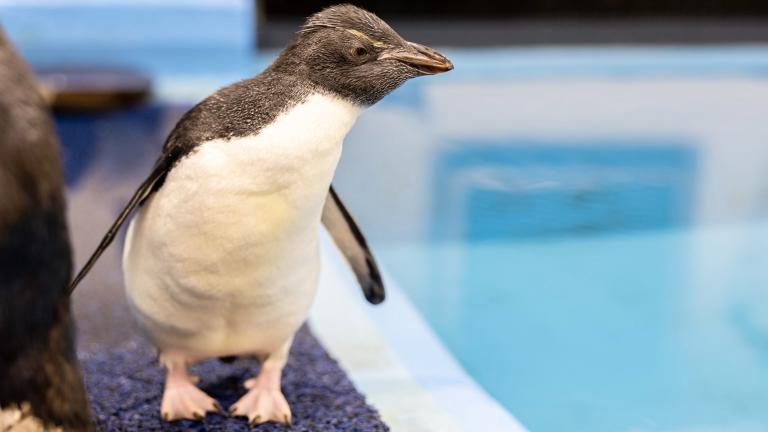 Silvia Alvarez-Clare of Morton Arboretum measures a tree’s diameter in Costa Rica. (The Morton Arboretum)
Silvia Alvarez-Clare of Morton Arboretum measures a tree’s diameter in Costa Rica. (The Morton Arboretum)
Shedd Aquarium and The Morton Arboretum are taking their respective conservation efforts to the next level with recent designations as international Centers for Species Survival.
They’re now home to two of just 11 such centers recognized by the Species Survival Commission of the International Union for Conservation of Nature. Shedd’s center is devoted to freshwater ecosystems, while the Arboretum’s is focused on trees. Both received three-year funding grants from the Skokie-based Walder Foundation.
“This is providing the means for us to collaborate not only within the Chicagoland area but to really make a difference in biodiversity hot spots across the globe,” said Chuck Knapp, vice president of conservation research at Shedd Aquarium and co-chair of the IUCN SSC Iguana Specialist Group.
Under the centers’ umbrellas, Shedd will expand its freshwater mussel conservation program to Central America, while Morton Arboretum will extend its reach into southeast Asia, on top of existing projects in Central America and Mexico.
Freshwater and trees have generally received less attention and funding than more “charismatic” species and habitats, something the centers will aim to reverse.
“Did you know that one in three trees in the world is in threat of extinction, and that is more than all the mammals, reptiles and amphibians, twice, combined?” asked Silvia Alvarez-Clare, director of global tree conservation at The Morton Arboretum. “This (center) elevates trees to the level of more charismatic lifeforms and brings us to the table when big policy and conservation decisions are made globally.”
Likewise, freshwater conservation has paled in comparison with the focus placed on marine environments.
Though freshwater ecosystems cover a mere 1% of the globe, they harbor 51% of all fish species, and are being lost at twice the rate of marine or terrestrial habitat, Knapp said. Yet only at the most recent global biodiversity conference, held in Canada in fall 2022, were “inland seas” finally formally acknowledged.
“It’s always land and sea, land and sea, land and sea,” Knapp said. “It’s as if freshwater didn’t exist. And this was within our own community.”
Shedd has long carried the torch for freshwater and with the new center, the goal is to share Shedd’s expertise and provide a foundation other countries can build on to grow and sustain their own conservation programs.
“We’re hoping to develop a pipeline of biologists, particularly focusing on freshwater ecosystems in our case, that could then hopefully spin off and start its own cycle of just continuing to build that capacity within countries,” Knapp said. “It’s not only about biodiversity conservation, it’s about empowering people where they are to make the biggest impact they can.”
The plan is to bring people from partnering institutions to Chicago for training, as well, be it to study animal husbandry at the Shedd, gain botanical skills at the arboretum or observe curatorial practices at the Field Museum.
“In the case of Morton Arboretum, I’m super excited we’re going to try to have a true exchange of college students,” Alvarez-Clare said. “We’re going to bring (Chicago) students to Costa Rica to where we are doing some work, but we are also going to bring students from Costa Rica to Chicago so that these students get to see in real life what the conservation challenges are and what does it look like. I think that’s going to be really life changing for some of these students.”
 Shedd Aquarium’s Center for Species Survival will raise the profile of freshwater environments. (Brenna Hernandez / Shedd Aquarium)
Shedd Aquarium’s Center for Species Survival will raise the profile of freshwater environments. (Brenna Hernandez / Shedd Aquarium)
The Shedd and Morton Arboretum’s centers will follow the IUCN’s model of “assess-plan-act,” working with local governments, researchers and nonprofits to assess threatened species or areas, develop conservation plans and then put those plans into action.
The Arboretum already has some experience with the IUCN’s method, having led a global assessment of threatened oak tree species, said Alvarez-Clare.
The key to working on an international scale is to approach projects with a true sense of partnership, she said.
“We don’t just show up and tell people what to do. We very much engage with the local scientists or the local NGOs or the local communities,” said Alvarez-Clare, who is herself from Costa Rica. “And we make sure to include and go through participatory decision-making processes so that we really get buy-in from the communities, so we work together in a culturally responsible way that is very specific to each site.”
Though the centers were just announced last week, both are hitting the ground running.
Knapp is heading to El Salvador in the coming days to work with colleagues in the ministry of environment to begin surveying freshwater mussels, the diversity of which hasn’t been referenced since a 1927 publication, he said.
“So this is really an opportunity to learn; it’s an open book,” said Knapp. “It’s so important because Central America, it’s a biodiversity hotspot, but it’s capacity-poor. So this is where we feel like we can make a difference by helping develop capacity, understand what’s there, how can it be protected, and, to Silvia’s point, work shoulder to shoulder with collaborators in those countries to ensure whatever we’re doing, it’s done respectfully, it’s done appropriately.”
For her part, Alvarez-Clare said she’s excited about a new project in Guatemala, focused on the Trifinio Biosphere Reserve, which extends into Honduras and El Salvador.
“It’s about working with local communities to promote sustainable livelihood alternatives that will prevent deforestation,” she said.
Shedd and Morton Arboretum are also joining forces — a first for the two institutions — on a project involving the Cotón River watershed in southern Costa Rica, near the Panama border.
The biodiversity hotspot, which provides water to communities downstream, is home to native and endemic species, but has also suffered from deforestation.
Shedd’s center will lead a freshwater survey while Morton’s center collaborates with local partners on restoration efforts, including planting trees with ranchers. “And trying to figure out their needs — why are they cutting the forest and what can we do to prevent deforestation,” said Alvarez-Clare.
Closer to home, Shedd and Morton will continue to use their platforms to educate the public and raise the profiles of their respective causes.
“One of the most rewarding elements of working at a zoo, aquarium or botanical garden is the ability to tell these stories,” Knapp said. “We welcome 2 million guests each year that we’re able to try and convey the importance of conservation to and what they can do to help. If we can start to move the needle, ... well, that’s what we need to do. Because if not zoos or aquariums or botanical gardens, then what other organization is going to be able to do something?”
Contact Patty Wetli: @pattywetli | (773) 509-5623 | [email protected]








